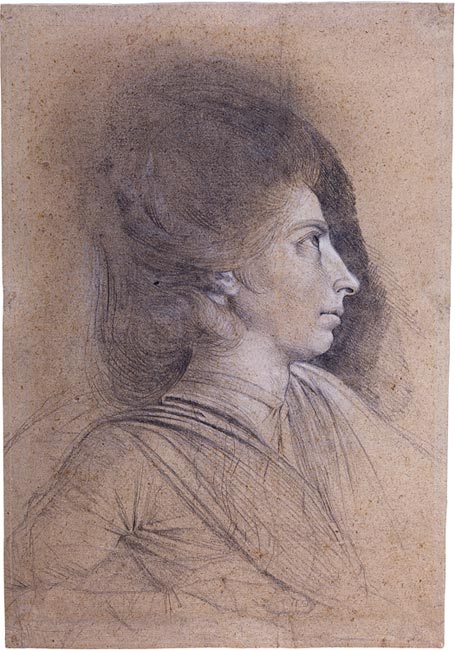
Fuseli, who left Switzerland in 1763, returned to his native Zurich only once for a six-month visit in 1778–79. It was during this period that he executed this portrait of Martha Hess, a niece of the artist's friend Johann Kaspar Lavater (1741–1801). Lavater, a scientist and philosopher, eventually incorporated some of Fuseli's drawings of Martha and her sister, Magdalena, and four plates engraved by Blake to illustrate his Essays on Physiognomy. Fuseli was attracted to Martha, who was described as "ethereal" and "inclined toward religious fanaticism." Shortly after she posed for the artist, Martha died from consumption in December 1779.
II. Friends and Followers
Among Blake's early friends were professors and other students at the Royal Academy, many of whom became leading figures of the age. He frequently engraved works by Thomas Stothard, Henry Fuseli, and John Flaxman, for example, as will be seen in this gallery. In his day Blake was more widely esteemed as a fine engraver than as a painter, his own imaginative work having been produced primarily on speculation or for patrons. Only nine years before Blake's death, the young artist John Linnell (1792–1882) became both a patron and friend. Through him Blake became acquainted with several youthful artists who came to call themselves the Ancients, after Blake's frequent reference to earlier artists as "ancients." They were inspired by Blake's imaginative spirit and his love for the art of Michelangelo as well as for the poetry of Milton. These men––Edward Calvert, Samuel Palmer, George Richmond, Francis Oliver Finch, George Cumberland, Frederick Tatham, and Henry Walter––are represented in the Morgan's collections.
